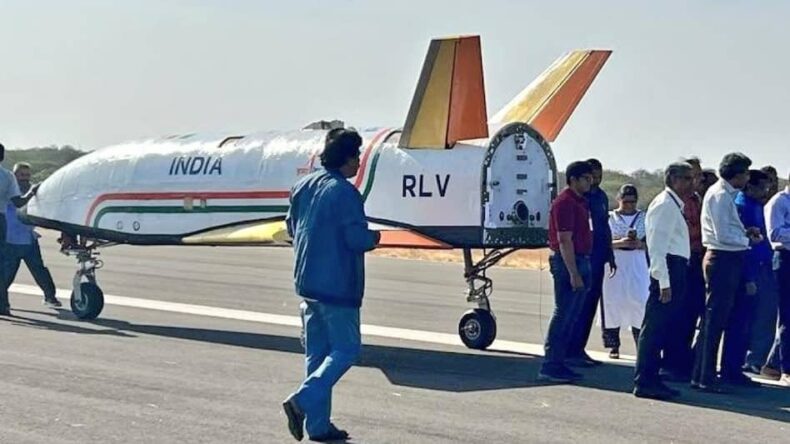Table of Contents
ISRO successfully finished RLV LEX
On April 2, 2024, ISRO successfully finished the RLV LEX in Chitradurga, Karnataka. The Reusable Launch Vehicle Autonomous Landing Mission occurred on the Aeronautical Test Range (ATR).
Such missions are a part of ISRO’s efforts to minimize space mission costs since a reusable rocket can go into space, perform its mission and come back to Earth, intact, unlike traditional rockets, which get destroyed.
Similar to the Space Shuttle RLV-TD is a winged, reusable launch vehicle that can travel into space and land back on Earth. During its first test flight in 2016, the vehicle successfully survived re-entry into the atmosphere and landed without incident.
The RLV LEX includes launching a scaled-down RLV prototype into space, retrieving it, and reusing it. The RLV-TD (Reusable Launch Vehicle-Technology Demonstration) prototype is intended to test the RLV’s essential aerodynamic features and technologies, such as its thermal protection system and reusable landing gear.
To make various operational rockets more cost-efficient, ISRO adapted contemporary technologies, specially developed for the RLV LEX. For the first time in the world, a winged body has been lifted by a helicopter to a height of 4.5 kilometers and then released by performing the first-ever autonomous runway touchdown.
ISRO launch…..
Launched at 7:10 IST the RLV worked from the Chinook Helicopter of the Indian Air Force as an underslung load, reaching a height of 4.5 km (above the mean seal level-MSL).
According to an order from the RLV’s Mission Management Computer, the RLV released mid-air at a down range of 4.6 km when the predefined pillbox parameters were reached. Ten metrics encompassing position, velocity, altitude, body rates, and other topics were among the prerequisites for release, according to the Indian space agency.
RLV was released on its own, which then conducted an autonomous landing on the ATR airstrip at 7:40 a.m. IST by performing approach and landing procedures with the help of the integrated navigation, guidance, and control system, helping ISRO in a successful landing.
Mirroring the landing conditions of a Space Re-entry vehicle, like matching the speed, without any man onboard, and having an exact landing of the return path, the body landed as a space shuttle on Earth.
ISRO says that various parameters like landing necessity of ground relative velocity were achieved. Also, the sink rate of the landing gears and exact body rates were accomplished duly. Discussed here are the kinds of landing conditions that an orbital re-entry spacecraft may encounter on its return journey.
watch this video : ISRO successfully conducts autonomous test landing of Reusable Launch Vehicle LEX

ISRO Technologies and their use and benefits are listed below.
- ISRO claims that the LEX used indigenous technologies like instrumentation, sensing, and navigation systems based on pseudo-lite systems.
- For accurate altitude information, the Digital Elevation Model (DEM) of the landing site was used with a Ka-band Radar Altimeter
- The aerodynamic assessment of the RLV before the flight was possible due to extensive wind tunnel testing and computational fluid dynamics (CFD) simulations.
As predicted the body was able to land, though not accurately (as foreseen) on the Bay of Bengal, on a hypothetical path.
This has been seen as a major accomplishment by ISRO in the path of making a fully self-working Reusable Rocket. The LEX mission achieved the final approach phase on Sunday, timed to the return flight path’s autonomous, 350 kph landing. Starting in 2019, the Integrated Navigation Test by LEX followed multiple trials ahead.
Read More: ISRO’s Gaganyaan Mission Parachute Deployment Tests













